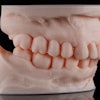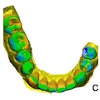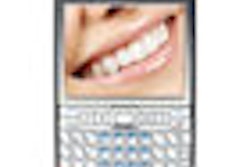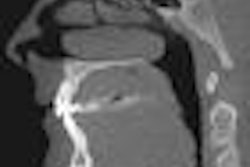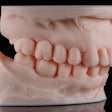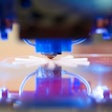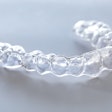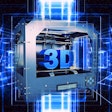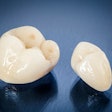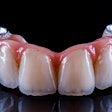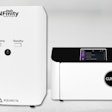A new add-on for designing dental copings and bridge frameworks in conjunction with Geomagic Studio is now available as a free technology preview, the company announced.
The new Copings and Frameworks Add-On enables copings and bridge frameworks to be designed directly from intraoral scans, 3D scans of dental impressions, and cone-beam CT scans. It extends the functionality of Geomagic Studio 3D modeling software, which transforms scan data and polygon meshes into accurate 3D digital models, according to the company.
Key features in the Copings and Frameworks Add-On include:
- A wide range of specialized dental design tools and the ability to leverage comprehensive editing tools in Geomagic Studio, enabling users to design complex and difficult cases.
- Automatic creation of copings and bridge frameworks in a few simple steps.
- Automatic detection of the margin line for a high-quality restoration fit.
- Compatibility with manufacturing processes that utilize superior materials, such as zirconia for strength, durability, and greater aesthetic value.
- Compatibility with a wide variety of scanning and manufacturing hardware devices and file formats, giving users the freedom to choose which hardware they use with Geomagic software.
"The Copings and Frameworks Add-On provides a fast, easy path from scan data to completed 3D models ready for manufacturing," said Karl Matthews, director of product management for Geomagic, in a press release. "We are aiming for faster development time, less waste, and more accurate modeling and analysis that leads to a higher-quality end product."
New tools in the Copings and Frameworks Add-On include:
- A cement gap adder that digitally replicates the cement a dentist adds when seating a crown to ensure a good fit in the final restoration.
- Undercut removal or "blocking out" to help ensure that the final restoration will seat properly.
- Tool radius compensation that shows what the restoration will look like after final milling.
- A sculpt knife that simulates a dental technician using a wax knife for restoration design. This enables users to fine-tune their designs and apply their expertise and artistry with greater precision and flexibility without physical models.
- Analysis tools such as cross-section and digital calipers that allow users to check the quality of their restorations.
Copyright © 2009 DrBicuspid.com

